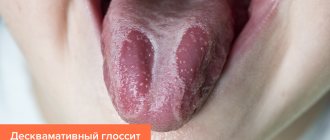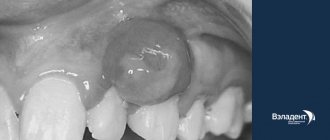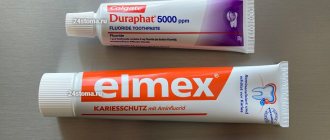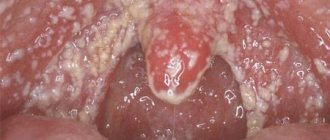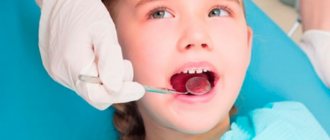Why does inflammation develop specifically on the lips? The fact is that the skin on them is different than on other parts of the body. The red border of the lips, although equipped with a protective stratum corneum, is too thin compared to the skin in other places. And at the same time, unlike the more secluded parts of the body, our tender and defenseless lips are always open to any adversity. They have to suffer from harsh climates, unfavorable ecology, chemicals contained in cosmetics, food, and many other irritants.
Related article: How to cure chapped lips? There are many reasons for cheilitis. Therefore, treatment may vary depending on the situation. But the first specialist you need to contact with such an ailment is a dentist. If it turns out that the disease is secondary, he will refer the patient to a specialized doctor.
To make it easier to navigate the variety of cheilitis, we will tell you about the main types of the disease.
Allergic to saxophone?
Did you buy a new lipstick or change your toothpaste? And suddenly my lips were “swept.” What's happened? This is how contact-allergic cheilitis manifests itself. The name itself speaks about the reasons that cause it.
But the culprits of the disease are not only chemicals - sometimes it develops after contact with metal objects. There is even a “professional version” - this type of cheilitis attacks musicians who play wind instruments - the lips react to contact with a metal mouthpiece. Peeling, itching, burning, redness of the lips, and sometimes swelling are unpleasant sensations. The main thing is not to try to get rid of them on your own; you can greatly worsen your condition.
What to do . To find and eliminate the culprit, this most often requires a consultation with an allergist and appropriate examinations to determine the allergen. For treatment, ointments containing corticosteroids, which have antiallergic, antipruritic and anti-inflammatory effects, are used, and antihistamines are also prescribed.
You will also have to watch your diet: give up citrus fruits, strawberries, chocolate, caviar and other foods that can provoke allergic reactions.
What does white plaque indicate - diagnostics
What does the formation of a whitish film mean? You can conduct preliminary diagnostics and identify the suspected cause of the problem by its location and main characteristics:
- cheilitis, herpes - clots form on the outside of the lips,
- candidiasis - accumulation on the inside of the lips in the form of a cheesy layer,
- problems of the gastrointestinal tract - clots look like a sticky film,
- vitamin deficiency, alcohol and nicotine addiction - a whitish coating collects in the corners of the mouth.
Accumulations under the lip also occur with fungal infections of the mucous membrane. If they cover the palate, tonsils, the inside of the cheeks and the tongue, then this is a severe form of infection. In men, this type of formation is most often the result of smoking.
Wind and sun are not friends
There is also the so-called meteorological cheilitis, which often develops in those who spend a lot of time in the wind and are often exposed to sudden temperature changes in the air.
And in the southern regions, where the sun shines brightly almost all year round and therefore increases solar radiation, actinic cheilitis is common.
What to do. Lips should be well protected and constantly use hygienic and sun-protective lipstick. And for those who work in the wind, on the street, a special ointment based on lamb fat is suitable, which is no less effective than lipstick.
These two types of cheilitis must be treated promptly and carefully so that they do not gradually become chronic, because against their background, oncological diseases of the lips and oral cavity often rapidly develop.
What to do if your lips are chapped
The main causes of dry lip skin Beautiful and moisturized lips emphasize the health of the skin, while chapped lips bring a long-term feeling of discomfort and do not look aesthetically pleasing. Lips are the most sensitive part of the face. Their structure consists of many nerve endings. The absence of sebaceous and sweat glands makes the thin skin of the lips truly fragile and delicate. In summer, lips become chapped less often. In hot sunny weather, daily comprehensive facial skin care is more than enough. But in the autumn-winter period of the year, lips are especially susceptible to dryness and peeling. This is due to the fact that the thin skin of the lips is devoid of a hydrolipid film, which acts as a protective barrier from external irritants. These include: sudden temperature changes, cold wind, humid air, heating. Drinking hot drinks outside exposes your lips to the cold air. In addition to external factors, there are a number of internal causes of dryness and flaking. Let's look at the most common of them. Lack of vitamins A and E, dehydration. To compensate for the lack of vitamins during the cold season, balance your usual diet with foods high in fiber. Pay attention to vitamin complexes. Discuss your choice with your doctor first. Insufficient consumption of clean water provokes dryness and peeling not only of the skin of the lips, but gradually leads to dehydration of the entire body. Install an application on your mobile phone that will remind you to drink water on time and normalize your water balance.
Bad habits. Biting and licking aggravate the condition of chapped lips. Every time you feel discomfort on your lips, moisturize them with a nourishing product.
Improper care provokes the appearance of cracks on chapped lips and aggravates the problem. Dryness often appears after frequent use of cleansers. Therefore, carefully study the label of facial cleansing cosmetics. Daily hygienic lip skin care is definitely one of the most common beauty procedures. It begins with morning cleansing of dead skin particles and continues throughout the day. The sensitive skin of chapped lips requires delicate care. High-quality cosmetics will help quickly restore lips from chapping, provide reliable protection, long-term nutrition and hydration.
We replace dryness and flaking with tenderness and hydration . Are you familiar with the concept of biosynergy? This is a combination of innovative and natural ingredients that enhance each other's effects. It is on this combination that the CERAMED moisturizing lip balm was developed. The key components of the balm are ceramides. They are responsible for smoothness and hydration of the skin, restore cells and smooth the skin of the lips. Young skin actively produces ceramides at a natural level, but with age their quantity decreases. Lack of lipids causes dry skin of the lips and provokes irritation. When applying a balm with ceramides to damaged lips, the intercellular process of regeneration of the upper layer of the epidermis is launched - the skin is renewed. Lipids are able to restore defects in the intercellular structure caused not only by external factors, but also by skin diseases (atopic dermatitis, psoriasis). Like bricks, ceramides are embedded in the deep layers of the skin, forming a reliable protective barrier that promotes the rapid healing of wounds and cracks on the thin skin of the lips. The complex of ceramides included in the balm retains moisture on the surface of the skin and restores chapped lips.
Properties of lip balm with ceramides.
- Relieves the feeling of dryness and discomfort
- Restores chapped, chapped lips
- Helps moisturize and restore skin
- Prepares lips for makeup
The thick texture of the balm instantly moisturizes and nourishes the skin, eliminating the feeling of dryness. For greater effect, the balm can be used as a night mask. Applying a thick layer of nourishing cera balm to the skin of your lips will ensure your lips look well-groomed and healthy in the morning. CERAMED balm does not contain fragrances or dyes, so the risk of an allergic reaction is minimized. With daily use of the balm, lips acquire natural color, softness and elasticity. The quality and effectiveness of Cera-Balm has been confirmed by clinical studies at the CosmoProdTest Medical Scientific and Practical Center for Expert Evaluation of Nutrition and Cosmetics.
Cera-advice When choosing decorative cosmetics for lips, it is worth considering the content of moisturizing emollients in the composition. The most active are essential oils and a complex of vitamins A and E. We recommend not to overuse matte lipstick - it dries out the skin of the lips. Before applying matte or liquid lipstick, moisturize your lips with a thin layer of Cera Balm. A delicate scrub or superficial peeling will do an excellent job of cleansing the skin of dead skin particles. Products that use natural oils or honey in their recipes additionally saturate the skin with amino acids and fats. After each cleansing procedure, apply a thick layer of Cera Balm to your lips. Ceramed lip balm will revive chapped lips and give them deep care and reliable protection until the first summer sun!
Another crack?
A serious problem is a crack in the middle of the lip, which is very difficult to get rid of - the inflammatory process is “stimulated” by microbes that get into it, which prevents healing, and the lip in this place often bursts again and again. And this is not only a cosmetic flaw that spoils life - the crack causes pain when talking and eating. The disease can be triggered by injuries, lack of vitamins, smoking and meteorological factors.
What to do . First of all, find the reason that causes the crack to form again and again. And be patient to complete the course of treatment. The doctor will prescribe drugs that have an anti-inflammatory effect and accelerate the formation of epithelium at the site of injury. Sometimes antibiotics are needed.
In extremely difficult cases, they resort to excision of the crack. When the course of treatment is completed, it is important to ensure protection against relapse: use hygienic lipstick, forget about childhood habits: do not lick your lips, do not suck a pencil, do not bite your nails, give up spicy and too hot food.
What should healthy lips look like?
Those who know how to moisturize their lips can boast of their naturally beautiful appearance. The natural red hue is due to the location of blood vessels near the surface.
Signs of healthy lips:
- smooth skin;
- smooth texture;
- pleasant natural shade;
- no peeling or cracking.
Healthy lips have even, uniform pigmentation without light or dark areas. Healthy skin looks elastic, it is not prone to irritation, peeling and allergies.
If a whitened area is detected, it means that the delicate skin does not receive enough hydration or there are not enough vitamins in the body:
- A,
- E,
- WITH.
First you need to learn how to use the right cosmetics. This applies to all people, because even if there are no problems with the lips, a careful attitude will not be superfluous.
You need to be able to choose the right cosmetics. And the first thing people pay attention to is the composition. Oil-based products should contain only natural ingredients:
- jojoba oil,
- cocoa,
- shi,
- nut oils.
It is best to buy products at a pharmacy or labeled “pharmacy product”. This means that cosmetics:
- passed dermatological tests,
- approved by experts
- considered safe.
In addition to moisturizers, there are small life hacks to improve the color and contour of your lips.
Shock freezing is often used: using ice to massage the lips. With prolonged exposure to cold, the appearance of the lips deteriorates, but short periods of exposure to shock cold cause the capillaries to expand sharply. Blood flows closer to the skin and provides:
- more active saturation with oxygen and nutrients,
- more saturated lip color.
The most common advice for lip care is the use of special lipstick. But there are several ways to moisturize your lips without chapstick.
Continuous geography
Often, during an examination, the doctor asks: “Show your tongue!”: by its appearance, one can suspect symptoms of a variety of diseases. But the tongue also has its own specific diseases. One of them is desquamative glossitis, in which the surface layer of the mucous membrane begins to peel off, or, as experts say, slough off. As a result, in some areas of the tongue there are no filiform papillae left at all, and they acquire a bright red color, while a light coating appears on the neighboring ones.
Pathological causes
If plaque appears regularly even after oral hygiene, this may indicate a more serious pathology, namely:
- diseases of the gastrointestinal tract;
- scarlet fever;
- respiratory tract diseases;
- lichen planus;
- stomatitis;
- diabetes mellitus, in which you constantly feel thirsty;
- exacerbation of herpes infection.
An undesirable symptom may also appear in the morning due to dental diseases (caries, periodontal disease).
If hair grows in your mouth
Of course, this does not happen, but sometimes it seems that the tongue is covered with... hair. The fact is that thread-like papillae grow on the tongue, and their length can reach one and a half centimeters, and they become like hairs. This phenomenon is observed in cases of impaired immunity, in response to certain medications that disrupt the microflora of the oral cavity, as well as in patients with chronic gastritis and colitis. There is nothing wrong with this, but the patient experiences unpleasant sensations that create constant discomfort.
What to do . If possible, you should stop taking medications and take only antihistamines. After 5–10 days, the “hair” on the tongue will disappear. And don’t forget to brush not only your teeth, but also your tongue twice a day.
Non-pathological causes
Various factors can provoke white plaque on the lips:
- insufficient oral care;
- an unbalanced diet when it does not provide the body with sufficient vitamins and minerals;
- wearing dentures;
- taking certain medications;
- depression;
- bad habits, in particular smoking.
To get rid of unwanted manifestations in such cases, it is enough to eliminate the provoking factor.
If the problem occurs only in the morning, most likely the white coating is dried saliva that flows out randomly during sleep. When such manifestations are observed occasionally, and the plaque itself does not have an unpleasant odor, there is no need to worry. The film will disappear after hygiene procedures.
Be careful, border!
Oncological diseases of the lips and oral cavity usually creep up unnoticed; all of them can now be successfully treated if you consult a doctor in time. What symptoms should you pay attention to?
Sometimes a malignant formation can cause a harmless-looking spot on the lip. Although it often does not bother you for several months, then an erosion or ulcer suddenly forms, which seems to sink inside the lip and harden.
In men after forty years of age, a wart often appears on the lip, which quickly becomes covered with papillae, becomes horny and lasts for 4–6 months. It is best to remove it as soon as possible.
In general, if you feel any discomfort in your mouth or notice something “suspicious,” do not put off visiting the dentist. Be attentive to yourself!
Candidiasis: manifestations of infection and its danger
Separately, it is worth highlighting such an infectious disease as candidiasis. Fungi of the genus Candida are present in almost every organism. Under favorable conditions (decreased immunity, taking antibiotics, oncology, hormonal changes during pregnancy, menopause, etc.), they are activated and cause candidiasis of the oral mucosa. The disease most often affects infants and older people.
One of the main signs of the disease is a white, loose coating on the tongue and lips. It may also cover the inner surface of the cheeks, less commonly affecting the palate and gums. The plaque is easily scraped off, the tissue underneath turns red and sometimes bleeds. Other symptoms of candidiasis:
- unpleasant taste;
- dry mouth;
- burning sensation;
- formation of cracks on the lips and redness in the corners of the mouth;
- pain and difficulty swallowing;
- discomfort with normal tongue movements.
The disease can occur in acute and chronic form. The first of them is more common. The second can manifest itself in smokers, as well as in carriers of HIV infection. As each form of the disease progresses, other undesirable symptoms may appear.
If the acute form of candidiasis is not treated, it will become chronic. In this case, the patient feels severe discomfort. In places where plaque is localized, wounds appear that bleed and fester. Thrush quickly spreads to other parts of the mouth, making it difficult to chew food. The infection eventually affects the pharynx and tonsils. Then it descends into the lungs, gastrointestinal tract, liver and causes irreparable harm to them.
Preventive measures
To avoid the formation of a whitish coating and characteristic clots on the lips, it is advisable to adhere to the following expert recommendations:
- timely treatment of gums and teeth,
- maintain proper oral care,
- create the right diet - reduce the amount of simple carbohydrates and sugar,
- maintain a drinking regime,
- reduce the consumption of alcohol and tobacco products to a minimum,
- strengthen the immune system, take vitamins A, B, E,
- use a hygienic balm that prevents the appearance of cracks on your lips.
It is important to observe the rules of personal hygiene to prevent the appearance of films in infants. You must remember to boil bottles, pacifiers and periodically wash all toys with soap.
As doctors note, plaque can signal the presence of various health problems, but before starting treatment, it is worth finding out why it formed. Only an accurate diagnosis of the disease will help speed up the recovery process and prevent complications.
What symptoms should cause alarm?
A small amount of whitish clots is often a consequence of the vital activity of organisms living in the mouth. If the formation of a film is not accompanied by discomfort or pain, and the film itself is easily cleaned off, then you don’t need to panic. But plaque should cause alarm if the following accompanying symptoms occur:
- unpleasant, putrid odor from the mouth,
- decreased functionality and mobility of the tongue,
- change in consistency and shade of plaque,
- restless sleep,
- loss of appetite,
- painful sensations in the throat, abdominal part.
An unpleasant accompanying symptom of the problem may be bad breath.
The listed signs can signal serious pathologies and require an immediate visit to the doctor. Based on the test results, he will identify the causes and determine treatment tactics.
Herpes on the nose: symptoms and signs
It must be said that the rashes are not typical. Herpes in the nose manifests itself differently than, say, on the lips. During an exacerbation, a conglomerate rash usually appears in this zone, which has a thicker “crusty” outer layer. It is formed by epithelial cells. Outwardly, such a rash resembles abscesses rather than blisters that appear with a herpes rash on the lips.
On the wings of the nose, white (sometimes light pink or yellowish) bubbles up to 5 mm in diameter can form.
Note that if herpes first appeared in the nasal area (in the nasal cavity or on the tip of the nose), then in case of relapses, the infection will most likely appear there.
Typically, symptoms of the disease appear inside the nose. There appears redness, itching, slight hyperemia, against which small blisters appear. There can be more than a dozen of them in one conglomerate. They are located close to each other. At first they are filled with a clear liquid, which after a while becomes dark. If the formations are not touched (do not scratch, do not open), then after a while they will dry out on their own and disappear under a gray-yellowish crust. This “sore” will disappear on its own in a few days. A stain will remain in its place, which will acquire a natural shade over time. This process can take from one to several weeks, since the disappearance of rashes in one place does not guarantee that they will not appear in another.
If you accidentally damage the bubbles, the process may take longer. In addition, an inflammatory process may begin on the damaged surface, which in turn is fraught with erosion of the mucous membrane and ulceration. These processes may be accompanied by severe itching, burning and pain. In this case, there is a danger of a secondary, often bacterial, infection. Accordingly, this aggravates the patient’s situation and requires additional treatment.
